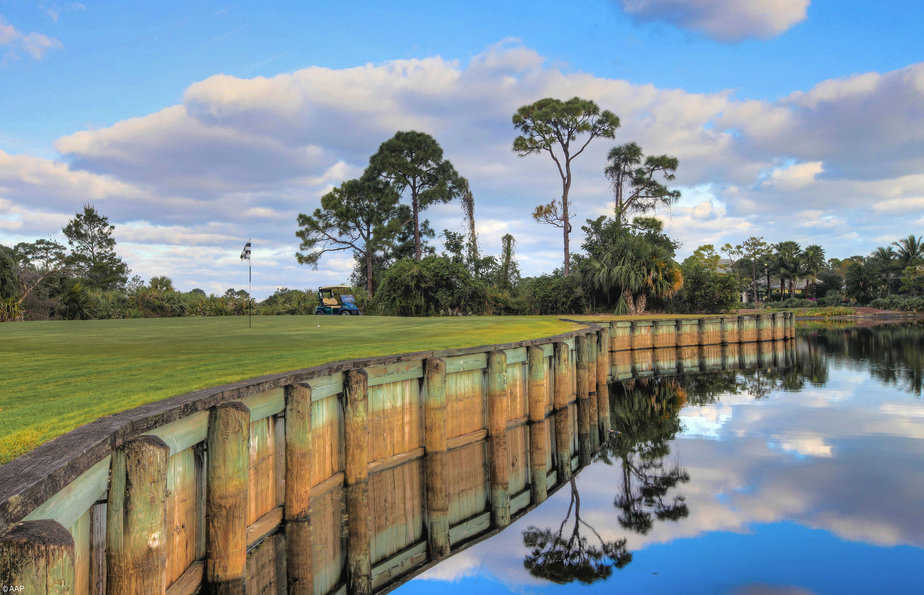
How do golf courses keep their water features so clean? You can apply the same water treatment solutions to your farm dam
Water is the lifeblood of any farm, and for those agricultural entrepreneurs who rely on farm dams to supply water to their livestock and crops, maintaining the quality of this resource is paramount. However, the water in farm dams can often be compromised due to various factors such as runoff, algae blooms, and contamination from organic matter. This article will delve into comprehensive water treatment solutions designed to preserve the integrity of the water stored in farm dams, ensuring it remains safe and beneficial for its intended purposes.
The Importance of Clean Water in Farm Dams:
In the agricultural realm, water plays several critical roles from hydrating livestock to irrigating crops. The quality of this water can significantly affect farm produce and animal health. Contaminated water can not only endanger the health of the animals who drink it, causing disease and reducing productivity, but also compromise the quality of crops, ultimately affecting the farm’s profitability and sustainability. Therefore, treating the water in farm dams is not an optional luxury, but a necessary investment.
Common Challenges Faced by Farm Dams:
Before exploring the solutions, it’s essential to identify common challenges that farm dams face:
Algal Blooms: Nutrient runoff from the farm or nearby areas can cause excessive algae growth in dams, leading to algal blooms. These can deplete oxygen levels in the water, emit toxins, and create dead zones, all harmful to aquatic life and water quality.
Organic and Inorganic Contamination: Runoff can also carry pesticides, pathogens, organic matter, and inorganic pollutants from the surrounding land into the water.
Sedimentation: Erosion from adjacent fields or banks can lead to sedimentation in the dam, affecting water flow and quality.
Acidification or Alkalization: Decomposing organic matter and certain chemical reactions can alter the pH of the water, making it too acidic or too alkaline for safe use.
Tailored Water Treatment Solutions:
Effective water management strategies need to be holistic, tackling the issues on multiple fronts. Here are several tried-and-true methods for maintaining and improving the quality of your farm dam water:
Aeration:
Purpose: Aeration increases oxygen levels in the water, curbing harmful algal blooms and promoting a healthy aquatic ecosystem.
Methods: Introduce a fountain or diffused aerators into your dam. While fountains aerate surface water, diffused aerators release air at the dam’s bottom, ensuring comprehensive circulation and aeration.
Buffer Zones:
Purpose: Planting vegetation around the dam, or buffer zones, helps stabilize the soil, reducing both erosion and runoff.
Implementation: Plant grasses, shrubs, or trees native to your region around the dam’s perimeter. These plants will also absorb excess nutrients before they can enter and contaminate the water.
Biological Additives:
Purpose: These additives introduce beneficial bacteria to the water, which naturally break down organic materials and outcompete algae for nutrients, reducing blooms.
Application: Products are available as powders or liquids that you mix into the dam water. It’s vital to choose additives designed for agricultural use to ensure they’re safe for livestock and crops.
pH Balancing:
Purpose: Keeping water within the optimal pH range (generally 6.5 to 8.5 for agricultural needs) ensures it’s safe for both livestock and irrigation.
Methods: Regularly test your dam water’s pH with kits available at agricultural supply stores. If the water is too acidic or alkaline, appropriate additives can balance it.
Sediment Removal:
Purpose: Over time, sediment builds up and can contribute to contamination and eutrophication.
Methods: Dredging, the process of removing accumulated sediments from the bottom, can help restore the dam’s capacity and water quality. This method requires specialized equipment and, sometimes, professional assistance.
Chemical Treatments:
Purpose: In some cases, algal blooms or other contaminants may require direct, immediate treatment through approved algaecides or other chemical treatments.
Precautions: These treatments must be handled with care, following expert guidance, as they can affect the water’s safety for livestock and other uses.
Regular Monitoring and Assessment:
Necessity: Consistent checking of water quality, including pH, oxygen levels, and visual inspections, will help you anticipate issues before they escalate, allowing for timely intervention.
Implementation: Create a regular schedule for comprehensive water testing, either through professional services or using farm-based test kits.
Conclusion:
Water is an indispensable asset to any farm, and ensuring its quality guarantees the health and productivity of the entire agricultural operation. While challenges exist in maintaining this purity, the solutions lie in proactive management strategies.
By understanding and implementing comprehensive water treatment solutions, farm owners can secure the vitality of their water supply. It is this forward-thinking and responsible approach that contributes to a thriving, sustainable agricultural practice, underscoring the symbiosis between the land, water, and the hands that tend to them.
More reading
Why Polymer Sealers Are Not The Solution To A Leaking Dam

Pingback: Solving Low Rainfall: Strategies For Water Scarcity Mitigation | Big Ditch Dam Building Company